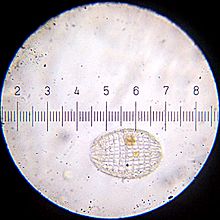The plagiopylids are a small order of ciliates, including a few forms common in anaerobic habitats.

The Litostomatea are a class of ciliates. The group consists of three subclasses: Haptoria, Trichostomatia and Rhynchostomatia. Haptoria includes mostly carnivorous forms such as Didinium, a species of which preys primarily on the ciliate Paramecium. Trichostomatia (trichostomes) are mostly endosymbionts in the digestive tracts of vertebrates. These include the species Balantidium coli, which is the only ciliate parasitic in humans. The group Rhynchostomatia includes two free-living orders previously included among the Haptoria, but now known to be genetically distinct from them, the Dileptida and the Tracheliida.

The Colpodea are a class of ciliates, of about 200 species common in freshwater and soil habitats. The body cilia are typically uniform, and are supported by dikinetids of characteristic structure, with cilia on both kinetosomes. The mouth may be apical or ventral, with more or less prominent associated polykinetids. Many are asymmetrical, the cells twisting sideways and then untwisting again prior to division, which often takes place within cysts. Colpoda, a kidney-shaped ciliate common in organic rich conditions, is representative.

Coleps is a genus of ciliates in the class Prostomatea with barrel-shaped bodies surrounded by regularly arranged plates composed of calcium carbonate.
Plagiopyla is a genus of ciliates. It includes nine species:
Karyorelictea is a class of ciliates in the subphylum Postciliodesmatophora. Most species are members of the microbenthos community, that is, microscopic organisms found in the marine interstitial habitat, though one genus, Loxodes, is found in freshwater.

The ciliates are a group of alveolates characterized by the presence of hair-like organelles called cilia, which are identical in structure to eukaryotic flagella, but are in general shorter and present in much larger numbers, with a different undulating pattern than flagella. Cilia occur in all members of the group and are variously used in swimming, crawling, attachment, feeding, and sensation.

Climacostomum is a genus of unicellular ciliates, belonging to the class Heterotrichea.

Loxodidae is a family of karyorelict ciliates.
Remanella is a genus of karyorelict ciliates, belonging to family Loxodidae. Whereas Remanella inhabits brackish and marine waters, Loxodes – the other loxodid genus – is a freshwater taxon.
Protoheterotrichida is an order of karyorelict ciliates. It contains the family Geleiidae.
Geleiidae is a family of karyorelict ciliates. It is sometimes synonymized with family Aveliidae.

Armophorea is a class of ciliates in the subphylum Intramacronucleata. . It was first resolved in 2004 and comprises three orders: Metopida, Clevelandellida, and Armophorida. Previously members of this class were thought to be heterotrichs because of similarities in morphology, most notably a characteristic dense arrangement of cilia surrounding their oral structures. However, the development of genetic tools and subsequent incorporation of DNA sequence information has led to major revisions in the evolutionary relationships of many protists, including ciliates. Metopids, clevelandellids, and armophorids were grouped into this class based on similarities in their small subunit rRNA sequences, making them one of two so-called "riboclasses" of ciliates, however, recent analyses suggest that Armophorida may not be related to the other two orders.
Scuticociliatia is a subclass of ciliates in the class Oligohymenophorea. Its members are called scuticociliates. These unicellular eukaryotes are microorganisms that are usually free-living and can be found in freshwater, marine, and soil habitats. Around 20 members of the group have been identified as causative agents of the disease scuticociliatosis, in which the ciliates are parasites of other marine organisms. Species known to be susceptible include a broad range of teleosts, seahorses, sharks, and some crustaceans.

Tracheloraphis is a genus of ciliates in the family Trachelocercidae.
Miamiensis avidus is a species of unicellular marine eukaryote that is a parasite of many different types of fish. It is one of several organisms known to cause the fish disease scuticociliatosis and is considered an economically significant pathogen of farmed fish. M. avidus is believed to be the cause of a 2017 die-off of fish and sharks in the San Francisco Bay.

Metopus is a genus of anaerobic organisms from the family of Metopidae.
Philasteridae is a family of ciliates in the order Philasterida.
Parablepharismea is a class of free-living marine and brackish anaerobic ciliates that form a major clade of obligate anaerobes within the SAL group, together with the classes Muranotrichea and Armophorea.
Blepharismidae is a family of unicellular ciliate protists found in fresh and salt water. Two genera are recognized: Blepharisma, which contains some model organisms, and Pseudoblepharisma









